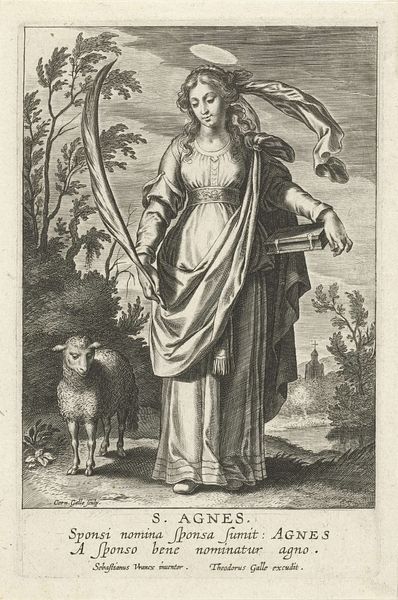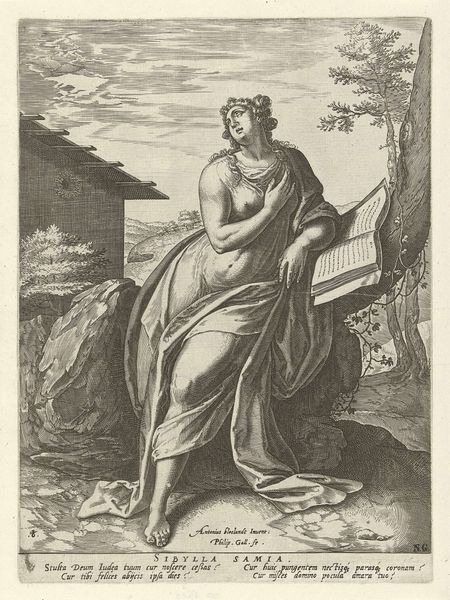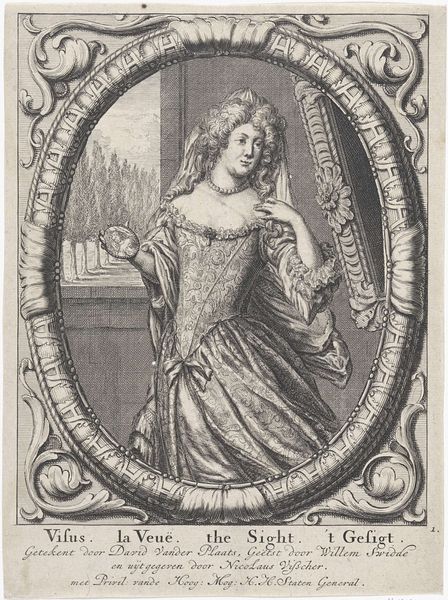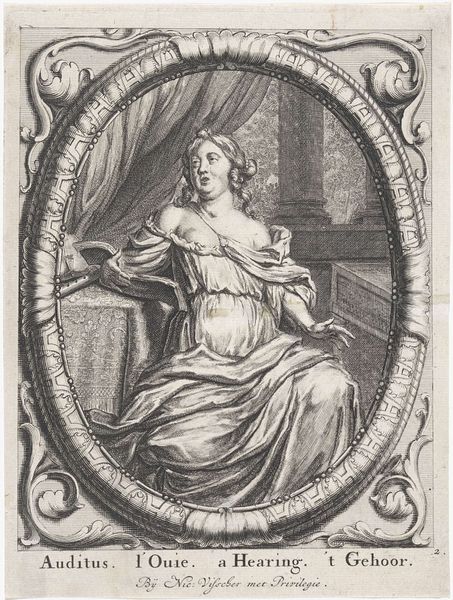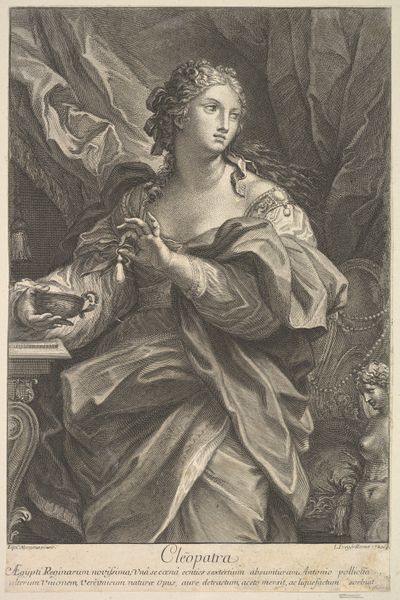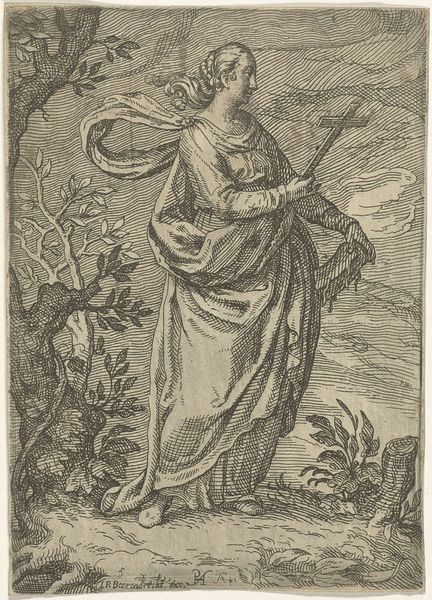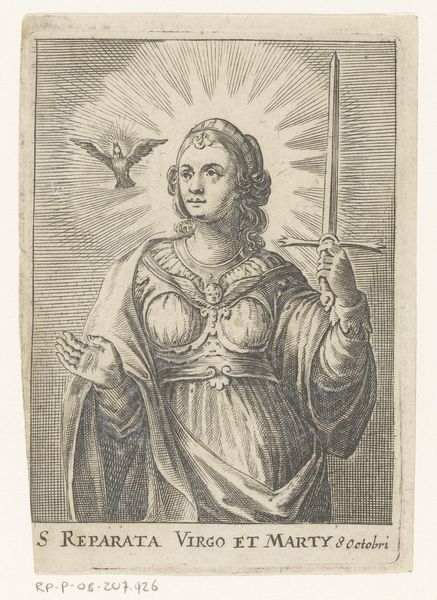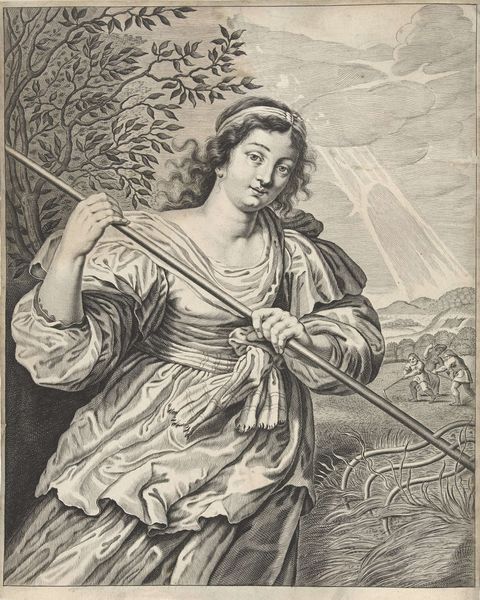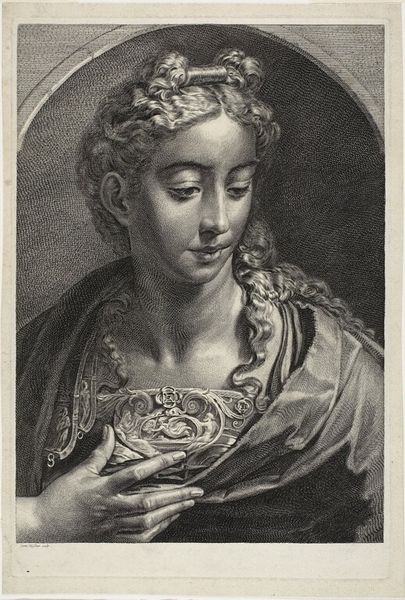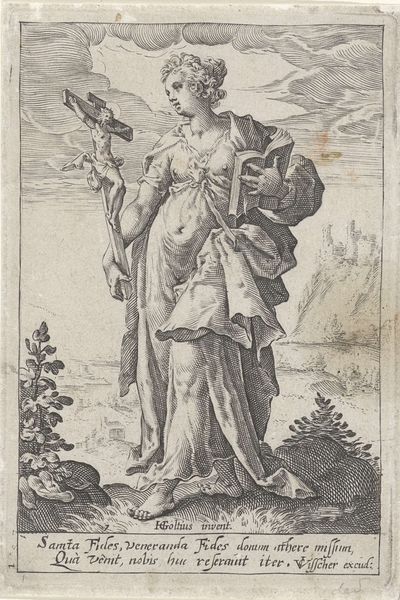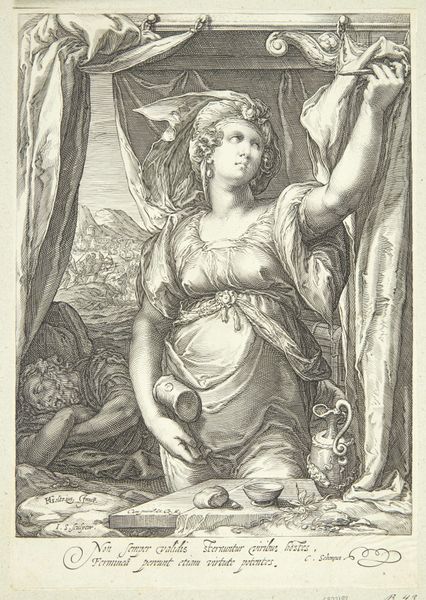
engraving
#
portrait
#
baroque
#
surrealism
#
portrait drawing
#
history-painting
#
engraving
Dimensions: height 242 mm, width 144 mm
Copyright: Rijks Museum: Open Domain
H. Margaretha was made by Alexander Voet I in the 17th century, using the intaglio printmaking technique of engraving. This process involves cutting a design into a flat surface, traditionally a metal plate, with a tool called a burin. The incised lines hold ink, and when the plate is pressed against paper, the image is transferred. Looking closely, you can see the intricate network of fine lines that form the image, creating shadows, textures, and details. Engraving demands immense skill and precision, honed through years of apprenticeship. It's a labor-intensive process, reflecting the cultural values of craftsmanship. The medium also lends itself well to the reproduction of images, making art more accessible to a wider audience, and playing a role in the distribution of knowledge and ideas during the early modern period. So, next time you encounter an engraving, consider the labor and skill involved, as well as its role in shaping visual culture.
Comments
No comments
Be the first to comment and join the conversation on the ultimate creative platform.
